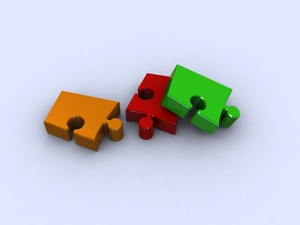Kids love piecing together wooden puzzles, but high-quality wooden puzzles sold in stores can be very expensive. If you have a scroll saw, there’s no need to buy wooden puzzles. You can create high-quality wooden puzzles of all types and sizes. Sand and paint the puzzles, and you’ve created eye-catching sturdy wooden toys that can be passed down from generation to generation. Best of all, you can make puzzles to match your kid’s favorite characters, holidays, or on any subject. The possibilities for making wooden puzzles are only limited by your imagination.
Necessary Supplies
To make a wooden puzzle you’ll need a 2-speed scroll saw with an 18-inch neck depth, ¼ inch high-quality 5-layer birch, or bass plywood, .009-inch thick scroll saw blades, stencils to trace, medium and fine-grade sandpaper, and a pencil.
If you plan to paint your finished puzzle, you’ll also need acrylic craft paint and clear acrylic finish. Otherwise, you can seal sanded puzzle pieces by polishing them with paste wax.
Some people prefer to make paper patterns that are glued directly to the plywood before cutting rather than tracing stencils. If you choose this method, glue paper puzzle shapes to plywood with rubber cement. The rubber cement can easily be rubbed away after cutting out the pieces.
Finding Puzzle Graphics
Coloring books are fantastic sources for puzzle graphics. The shapes are easy to cut out, and they can be traced or glued directly to plywood.
There’s no need to buy puzzle-making plans. You can also find free puzzle plans online. Visit http://www.freewoodpuzzles.com for dozens of free woodworking plans and puzzle stencils.
You can also use onionskin to make your own puzzle stencils in which to trace or cut around. Simply trace the outline of pictures of your choice, and draw random puzzle shapes inside. Cut out the shapes and either trace them or glue them to plywood before cutting. If you can trace it, you can make it into a high-quality wooden puzzle.
Puzzle Making Tips
If you’re new to puzzle making, practice cutting out random shapes with your scroll saw. It takes a lot of practice to perfect puzzle making techniques and scroll saw control.
Sand finished pieces first with medium-grit sandpaper, and follow up with fine-grit sandpaper for a smooth finish. Lightly said the edges but don’t over sand any one area. Otherwise, pieces may not fit together properly.
Plan on having a number of extra scroll saw blades on hand. You might break a number of blades while making a single puzzle.
Take care not to press the blade against the wood too hard. Breaking blades isn’t always avoidable, but don’t get in a hurry and you’ll go through fewer blades.
Jeweler blades are thin, but they don’t work well for puzzle making. They are too easily clogged with sawdust.
If you want to make more than one model of the same puzzle, don’t try to cut more than one shape at once. Cut all pieces separately for best results.
Clean away sawdust with a lint-free cloth before painting, and allow the paint to dry completely before coating with clear acrylic varnish.




